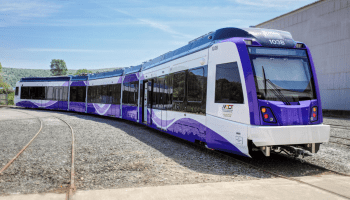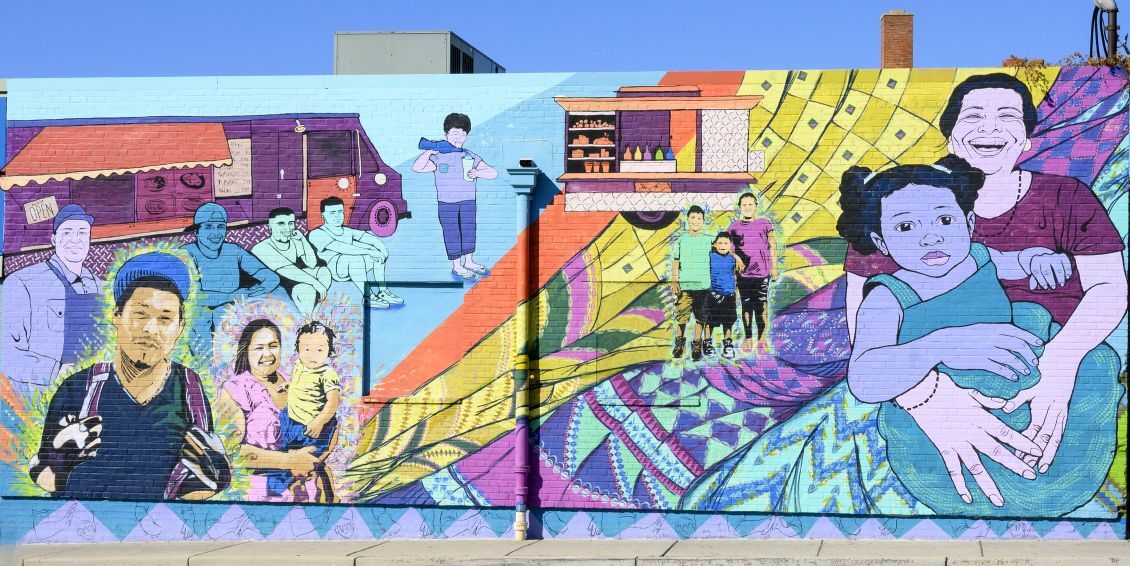Maryland’s new Purple Line light rail presents us with a choice about our future. If we are intentional and thoughtful, this $9.3 billion public infrastructure project can be a transformative force that lifts up communities. The project has the potential to drive access to housing; generate new markets for small, BIPOC and immigrant-owned businesses; narrow disparities in economic opportunity; and support vibrant and sustainable neighborhoods. If we fail to work together, however, the Purple Line can easily be a driver of inequity like so many major infrastructure projects, displacing Black and brown communities and eroding the cultural fabric of our neighborhoods.
The Purple Line Corridor Coalition (PLCC) has been working for nearly a decade to make sure this public investment works for everybody. We bring together community groups, service providers, lenders, entrepreneurs, public servants, and others to find common cause and drive shared action. With its home at the University of Maryland’s National Center for Smart Growth (NCSG), the PLCC is mobilizing along a corridor where nearly 70% of 173,000 residents are people of color, and nearly half of residents earn below 60% of area median income. Rents are already rising in anticipation of the Purple Line.
Through partnerships, we’ve helped strengthen anti-displacement policies like Prince George’s County’s Right of First Refusal, protected community businesses through outreach and organizing, supported neighborhood placemaking initiatives, and generated new data to support comprehensive equitable development planning along the Purple Line.
Likewise, our coalition partners’ work through a $5 million JPMorgan Chase grant helped drive substantial support and capital to communities along the Purple Line.
Multi-year, multi-million-dollar grants like this are rare. Earlier blogs in this series show how local organizations, with dollars in hand, can make a measurable impact. But the work of generating durable change inside a system that is not built for equitable outcomes is long-term, messy, and iterative. Much work remains ahead.
What Comes Next?
The Purple Line’s journey from conception to active construction project has been a complex, multi-billion-dollar process. As we plan for ambitious goals beyond the tracks, PLCC is focused on:
- More impact. We are halfway to our goal of preserving and producing 17,000 homes affordable to households earning under $72,000. Likewise, we have supported more than 275 of an estimated 830 small businesses along the corridor – many of which are BIPOC and immigrant-owned and have been in their communities for decades. We’re proud of this progress. As we have for the past decade, the PLCC network will work as a coalition to make impact and meet our goals.
- More imagination. To date, no community has generated a silver bullet solution to the challenges that come with gentrification. This means we must rely on our imagination as much as we rely on evidence, as we seek to prevent displacement and ensure inclusive change. Our partners are crafting solutions yet to be fully tested in our region, such as shared ownership of property. These new directions are backed by initiatives like the Small Business Anti-Displacement Network (SBAN), a sister project within NCSG. SBAN is lifting up anti-displacement stories from across the globe and helping PLCC articulate a new set of possibilities. Artists, youth, and community members can be essential partners in expanding our imaginations, and we are deepening our relationships to ensure their voices and visions are represented. These efforts are backed by commitments that initiatives like UMD’s new Creative Placemaking minor have made to anti-displacement work along the Purple Line.
- More funding. To put it simply, our number one need is more money to achieve our goals. Our coalition has raised more than $16 million in grants and capital from public and private philanthropic sources over the past five years. These investments have multiplier effects – for example, by increasing local spending and growing a more stable tax base. However, to make needed progress, we need more capital designed for greater inclusivity, more multi-year operating funds for nonprofits and CBOs, more capacity for organized community voices, and more funding for advocacy that continues to drive real systems change.

With just four years before the Purple Line is complete, time is of the essence. PRO Neighborhoods demonstrated that dollars, along with deep and sustained collaborations, can drive meaningful progress. The Purple Line presents us with an unprecedented opportunity, but the best outcomes can only happen if we work together and make the investment to write a success story for our community.
This five-part blog series highlights the impact of work by Enterprise Community Partners, the Latino Economic Development Center, and the National Housing Trust in communities near the Purple Line expansion. This work was generously supported by JPMorgan Chase through its PRO Neighborhoods initiative. Read our first, second, third, and fourth post.
